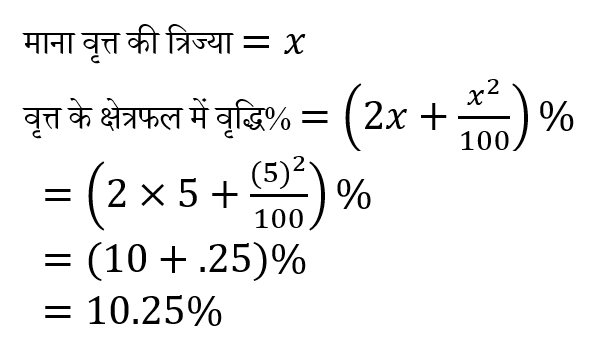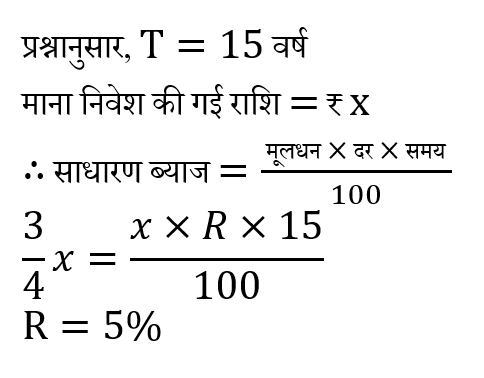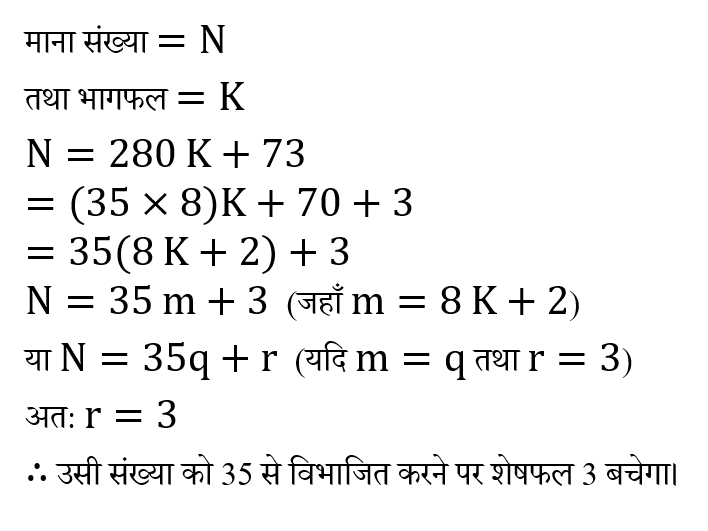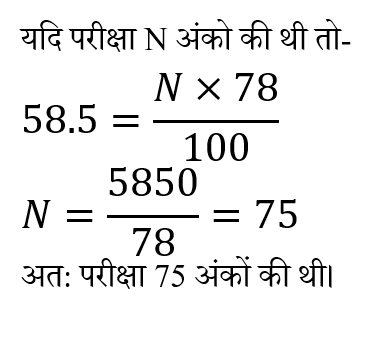Question 1:
The radius of a circle is increased by 5%. Find the percentage increase in its area.
किसी वृत्त् की त्रिज्या में 5% की वृद्धि की जाती है। इसके क्षेत्रफल में होने वाली प्रतिशत वृद्धि ज्ञात कीजिए।
Question 2: 
Question 3:
A sum of money is to be divided among A, B and C in the ratio 5:2:8. If the difference between the shares of A and C is ₹7,740, then what will be the total amount?
5:2:8 के अनुपात में A,B और C के बीच एक राशि का बँटवारा किया जाना है। यदि A और C के हिस्सों में ₹7,740 का अंतर है, तो कुल राशि कितनी होगी?
Question 4:
The floor of a hall is 16 m long and 12 m wide, on which square tiles are to be laid. If the minimum number of tiles is to be used, what is the length of each square tile?
एक हॉल के फर्श की लंबाई 16 मीटर और चौड़ाई 12 मीटर है, जिस पर वर्गाकार टाइल लगाए जाने हैं। यदि टाइल की कम से कम संख्या का उपयोग किया जाना है, तो प्रत्येक वर्गाकार टाइल की लंबाई कितनी है?
Question 5:
A 91 cm long wire is cut into two pieces such that the length of one piece is three-fourth of the length of the other. Find the length of the smaller piece.
एक 91 सेमी. लंबे तार को इस प्रकार दो टुकड़ों में काटा जाता है कि एक टुकड़े की लंबाई दूसरे की लंबाई के तीन चौथाई के बराबर हो। छोटे टुकड़े की लंबाई ज्ञात कीजिए।
Question 6: 
Question 7:
When a number is divided by 280, the remainder is 73. What will be the remainder when the same number is divided by 35?
किसी संख्या को 280 से विभाजित करने पर 73 शेष बचता है। उसी संख्या को 35 से विभाजित करने पर कितना शेष बचेगा ?
Question 8:
In an exam, Chitra scored 58.5 marks, which was equivalent to scoring 78% marks. How many marks was the exam?
एक परीक्षा में, चित्रा ने 58.5 अंक प्राप्त किए, जो 78% अंक प्राप्त करने के बराबर था। परीक्षा कितने अंकों की थी?
Question 9:
After giving a discount of 20% on the marked price, Kishore makes a profit of 12%. By what percentage is the marked price more than the purchase price?
अंकित मूल्य पर 20% की छूट देने के पश्चात किशोर 12% का लाभ कमाता है। अंकित मूल्य, क्रय मूल्य से कितने प्रतिशत अधिक है?
Question 10:
The simple interest on the principal at 8% per annum for a period of 2 years is ₹ 192. Find the principal.
मूलधन पर 8% वार्षिक दर से 2 वर्ष की अवधि का साधारण ब्याज ₹ 192 है। मूलधन ज्ञात कीजिए।









